What To Bring Mountain Biking
If you are new to mountain biking, you likely already have a comfortable helmet, your bike obviously, as well as gloves and knee pads. When it comes to things to bring mountain biking, it is easy to remember the protective gear you may need, but not necessarily the carry-on items that come in handy when riding. With this in mind, what are some other things you should consider taking out on the trails with you?
Some essential things to bring mountain biking include a backpack for carrying water and other essential supplies, a first aid kit, a fanny pack if you do not like wearing a backpack, and a multi-tool kit to ensure you are prepared if you need to repair something on a whim.
Some people tend to go overboard when it comes to things to bring mountain biking, therefore, we have prepared this handy guide that will list all of the essentials you should consider taking with you when mountain biking. Some of these items are self-explanatory, and there may be some items you never even thought of. Additionally, we will also answer some frequently asked questions regarding what to do with various devices when riding.
Essentials To Take Mountain Biking
Obviously, you should never ride without your bike helmet. Period. Your head is your most important asset, and mountain biking is inherently dangerous. It’s important to make sure that your helmet fits well, and is free of dents and cracks. Even if you haven’t crashed on your lid, manufacturers recommend replacing your helmet every three to five years because they can break down and become less effective.
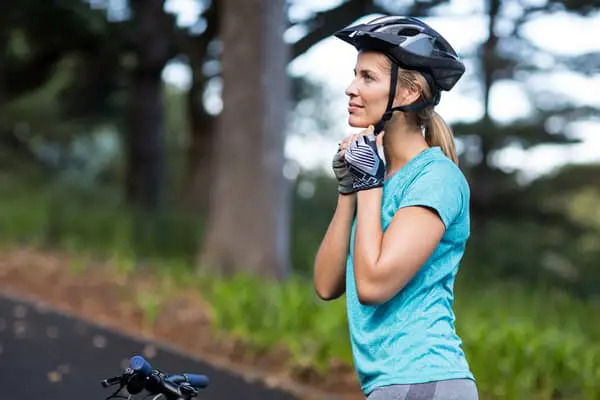
It’s not imperative to have a mountain-bike-specific helmet, but they do offer more protection often around the back of the head and ears.
Apart from the obvious, what are some main essential items you should take with you on the trails?
Water
You’ll be working hard out there on the trail, which will get you sweating no matter how good of shape you’re in, so you’ll need to take some hydration along with you. This can be plain old water, or an advanced cocktail of sports drinks or powders. Thankfully there are now plenty of great ways to carry your agua, from simple bottle cages on your bike to a fanny pack or hydration pack. Find a style that works for you.
Riding gloveless might be a cool thing to do, but protection and grip outweigh style every day of the week. Proper mountain bike gloves help you hold onto your handlebars, especially when things get sweaty, Likewise, they’ll help protect your hands if you crash. This means more time riding, and less time licking your wounds. The main differences between styles of bike gloves are protection and warmth. Choose based on your style of riding and climate.
Food
The snacks are why we all ride anyway, right? So don’t forget them on your kitchen counter! Mountain biking is a strenuous activity, so you need to constantly feed your body to keep up your energy and avoid the dreaded bonk. A good balance of quick energy (sugary snacks) and slower burning, protein-rich foods will keep you going all day long. Sour Patch Kids are a perennial favorite, with anything from leftovers to sports bars filling in the gaps.
Spare Bike Tube
Flat tires suck. Flat tires happen. There is nothing worse than getting one of these inevitable mechanicals and not being prepared. This can leave you stranded out on the trail, hiking the walk of shame back to the trailhead. A spare bike tube is a must, even if you are running tubeless tires.
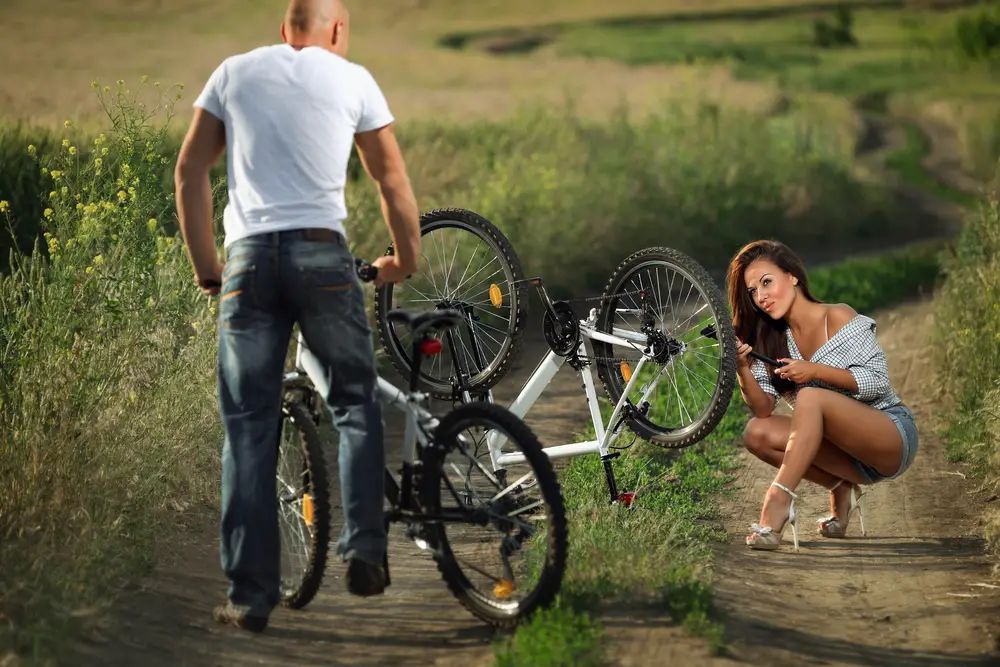
This way, if you can’t get your tubeless system to seal, you can just put in a tube. A lot of tubeless riders will just use a strap or even electrical tape to keep their emergency tube on their frame. This takes up less room in your pack, and you can never forget it.
Multi Tool Kit
Stuff happens when you’re out there on the trail, and a bike multi tool can quickly become your best friend. From simple adjustments like the height of your seat to fixing loose components, a tool is a necessity. For the minimalists out there, this is something that can be carried on your frame in a bag like the Dakine Hot Laps Gripper, or in a saddlebag.
This keeps weight off your back, or can even eliminate the need for any bag at all on shorter rides.
So you have your spare tube, that means you’re going to need some way to inflate it. There are two options for on-trail inflation: a small bike pump, or CO2 inflator. The pump is self-explanatory and easy to use. CO2 inflators use small cartridges of compressed gas and an inflator head to refill your flats, and they’re more compact than most pumps.
Even if you run tubeless tires, carrying a tube and inflation is important for the scenarios when your sealant fails, or you get a larger puncture. The small weight penalty sure beats walking off the trail. These are just a few of the bare-minimum accessories for mountain bike trail riding. They allow you to get out in a safe way and give you the ability to fix some minor on-trail mishaps.
Depending on how far you plan on riding and how remote your trails are, your list of required gear will change a lot. Regardless, these items are things you should never leave behind, and this is why a multi tool kit is essential.
Waist Pack Or Backpack For Mountain Biking?
The most obvious and significant difference between backpacks and fanny packs is the amount of stuff that each can carry. While most mountain bike backpacks range from 10L up to 35L, most fanny packs offer anywhere from 2L to 8L. What those storage volumes ultimately translate to is space to carry things.
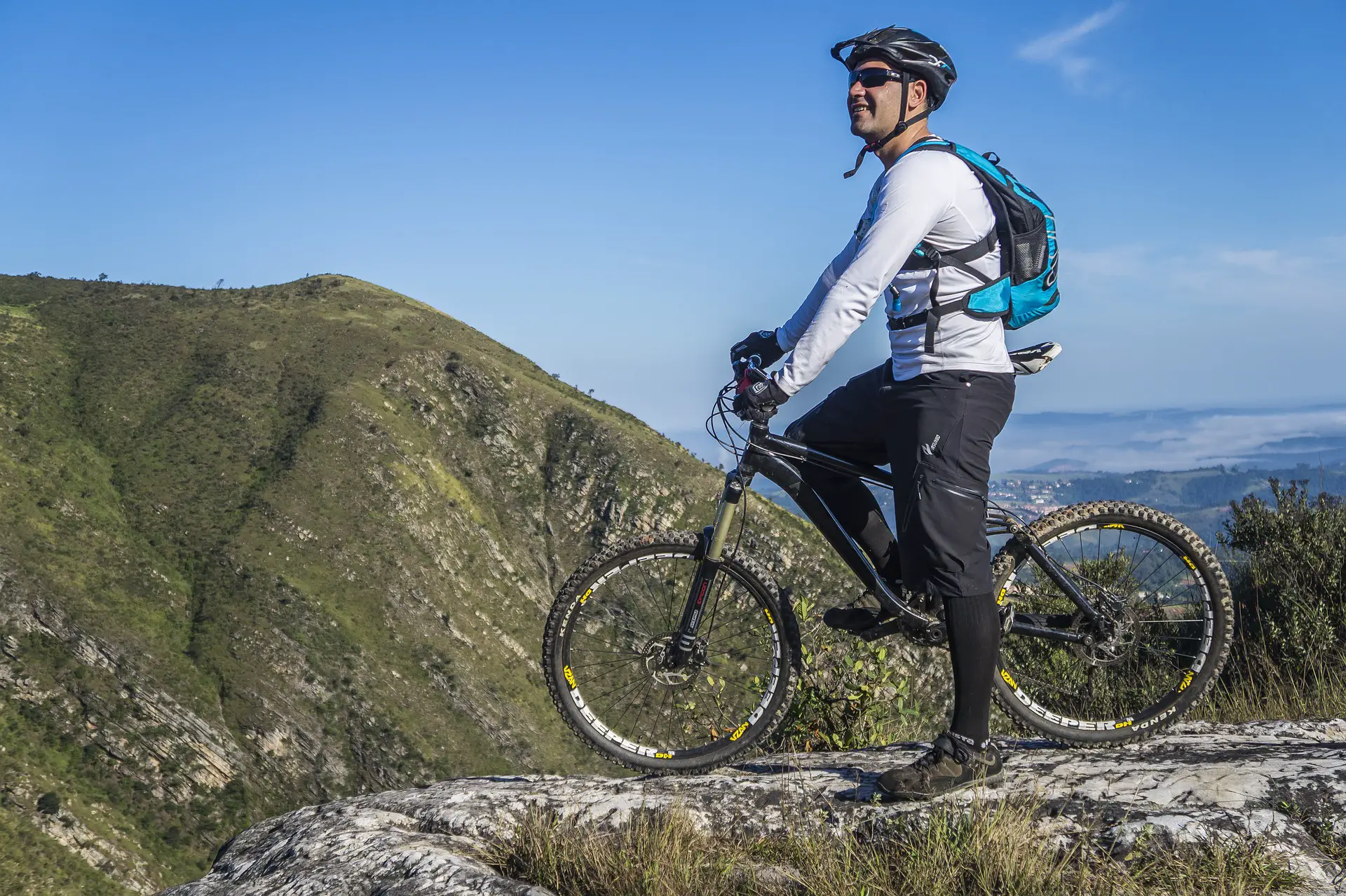
Where the extra space of a backpack enables you to bring more, the reduced capacity of hip packs means you’re not tempted to carry any unnecessary extras. Sometimes less is more, but for some mountain bikers, the mere difference in carrying capacity is the sole determinant in the debate between fanny packs vs. backpacks. In our opinion, it really comes down to the length of your ride — while hip packs are great for shorter rides, longer rides often warrant a backpack.
Weight Variability
The next biggest variable to analyze between waist packs and backpacks is where that extra weight in your pack actually sits. While some folks prefer having weight distributed over their upper back, others prefer the lower weight and lower center of gravity that comes with hip packs. Related to the positioning of the weight is the ‘swing weight’.
Generally the more weight you have and the further away from your body that weight sits, the more it will impact your riding when maneuvering and cornering — generally backpacks, by nature of their larger size impact swing weight more so than fanny packs.
Available Space
Perhaps even more so than weight distribution, the difference in breathability between a hip pack and a backpack is a pretty major factor for most folks. While backpack manufacturing companies will call out numerous features that make their backpacks more breathable and sweat wicking than ever before.
Don’t be fooled though, the increased surface area on your back that’s covered by a backpack will inherently make you more sweaty than that of a waist pack. For some, a sweaty back is a major nuisance. For others, it’s an inherent and accepted part of the sport.
Not to be overlooked is the aspect of back/spinal protection — after all, accidents do happen and mountain biking is an inherently dangerous sport. Bike repairs can always be made, but bodily repairs cannot. Recognizing this, many folks actually like riding with a backpack merely because it provides back protection.
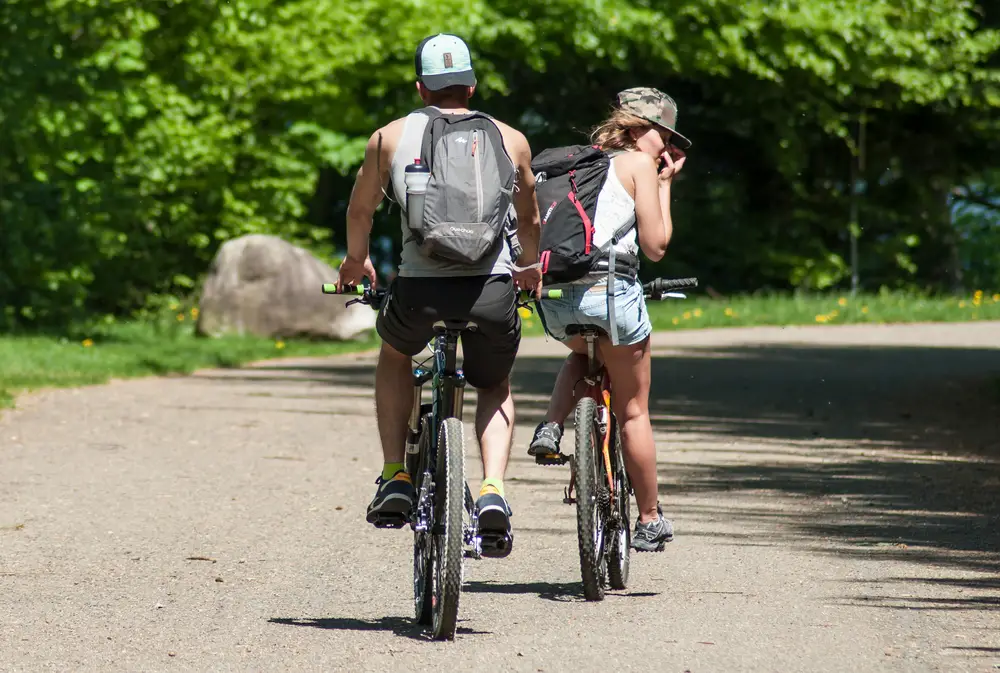
Fanny packs? Well, they provide a little extra padding for your lower back but it’s really pretty negligible compared to a backpack. What’s more, several mountain bike backpack manufacturers incorporate literal back protection features into many of their offerings. If you ride hard, fast, or technical trails (i.e. most of us) then back protection is a very valid consideration.
Let’s not underplay the value of being hip (yes, that pun was 100% intended!) either. There’s no denying that the resurgence of hip packs is trending within the mountain bike community as well as among streetwear enthusiasts.
No, backpacks are not suddenly seen as “uncool” but the equation is simple yet foolproof; when you look good, you feel good, and you ride good as well.
Go with a backpack.
Fanny Pack For Mountain Biking
Waist packs (fanny packs) are much more than an ironic fashion statement from the 90s. There are a bunch of good reasons to bag your big pack and give a fanny pack a try.
There is an adage in backpacking that goes no matter how big of a pack a person buys, they’ll find a way to fill it. And the same can be said about mountain bike packs. Indeed, that 14-liter hydration pack you bought for epic full-day rides at Kingdom Trails isn’t ideal for shorter before- or after-work sessions.
In general, waist packs are smaller than their backpack brethren and encourage bikers to become more selective about what they bring on a ride. Plus, less stuff means less weight and, hopefully, more miles.
Fanny packs keep weight low on a rider’s body, which lowers their center of gravity and improves bike handling. Another advantage of carrying the weight around the hips is that it’s less likely to swing around (and splash in the case of hydration packs) while tackling rowdy and steep lines. These benefits are only enhanced by the generally lighter weight of hip packs.
The difference in breathability between traditional backpacks and hip packs is like night and day. While backpacks have come a long way in terms of breathability and employ a variety of technologies to produce a barely-there feel, they just can’t compete with the ability to go “au naturel” that waist packs enable.
Want to snack on an energy bar or check your phone to make sure you started Strava? No problem, just spin your hip bag around for easy access to all the essentials—unlike a backpack, which requires you to either take it off or have a friend nearby rummage through it to grab an essential. It’s also easier to find what you’re looking for in a small hip pack than it is in a larger backpack.
Hip packs are infiltrating mountain biking, but it doesn’t mean that backpacks will go extinct anytime soon—both have their time and place. Waist packs are the go-to choice for carrying the essentials on hot laps, shorter rides on familiar trails, and when racing. Conversely, backpacks remain a favorite for all-day rides, winter trips, carrying camera gear, or when riders need to haul a lot of water along, like hot-weather or desert rides.
Because hip packs have gained so much traction with mountain bikers, the available options have exploded. Minimalists can find waist packs that hold just the absolute essentials (like keys, phone, tools, tube, and snacks), while the go-big-or-go-home crowd will gravitate toward larger-capacity hip packs with a hydration reservoir and room for extra layers.
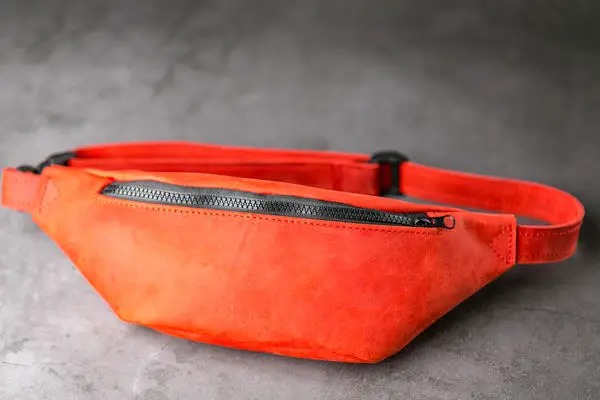
Those falling more in the middle of the spectrum will find a plethora of options with something to accommodate almost everyone’s riding style and fashion sense.
Pros of Having a Backpack For Mountain Biking
As you can see, the choice between a smaller or bigger backpack depends on your kind of practice with MTB. In cross-country competition, you must prioritise a backpack as small as possible, very compact and light with a volume inferior to 10L. You should generally be able to add a reservoir of 1.5L, your smartphone, keys and some tools.
- For the hiking lovers, backpacks with a volume of 10 to 30L should suffice depending on the quantity of personal stuff and equipment you want to take. You can carry along your reservoir, your tools, a waterproof or windstopper jacket, etc.
- Above 30L of volume, backpacks are better suited for camping or photo enthusiasts (to safeguard their imposing camera lens). The available space will be enough to carry your sleeping bag and tent but the backpack’s global weight will inevitably be heavier.
Cyclists have very different expectations of their backpack depending on their sport. Different types of backpacks do not meet the same objectives. They are more or less light, breathable or rigid. A performing ventilation at back level is an undeniable asset for your backpack. It will prevent excessive transpiration during your ride and thus maintain comfort even by hot weather.
Different technologies are made available depending on the brand or the backpack model.
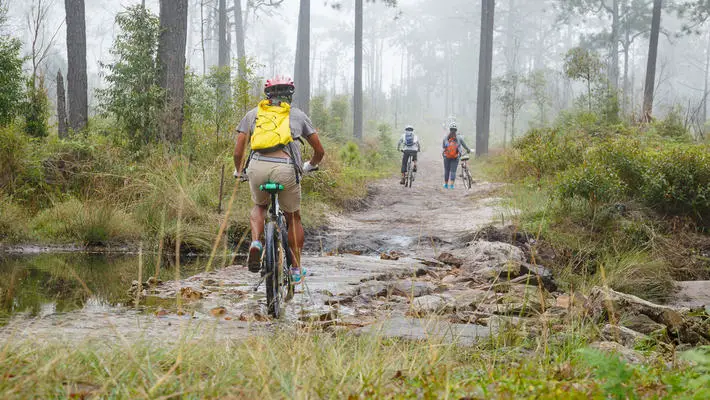
But in terms of MTB, the following should be found with a backpack in order to adequately suit the needs of the cyclist:
- The reservoir size varies from one to more than 3L depending on models. Reservoirs can be purchased separately so that you can choose the most suitable size or replace a worn-out pocket.
- It’s crucial to look at the reservoir in its globality: global fabrication quality (resistance, quality of the plastics used in the manufacture), but also more precise elements such as the tube or the reservoir’s opening size (if it’s large, you add ice cubes to clean it more efficiently).
- The number of straps varies on MTB backpacks but it’s recommended to have 2 anchoring points at least (on the chest and lower abdomen) to keep the backpack in place, even on bumpy trails.
- Some backpacks have external straps that allow you to maintain your protections (kneepad, elbow pad, helmet) on the rear of your backpack, without getting in the way whilst climbing.
- For those who wish for more protections, some brands offer backpacks with an integrated backplate, included in the purchase of a backpack or in option. It might prove very interesting for downhill or freeride fans who don’t want to pile up too many different layers. Their comfort and performance can only increase.
- A rain cover is also appreciated in case of bad weather. Even if your backpack is already waterproof, humidity will penetrate inside. Some backpacks have a foldable waterproof layer to help to keep your entire backpack dry.
- Female MTB riders should prioritize a backpack adapted to their individual morphology. Some fabricants like Camelbak provide models with a feminine cut.
Where To Put Keys When Mountain Biking
The question of where to store your keys when mountain biking is a pertinent one. If all else fails, bags and pockets are where you can put your keys while biking. However, depending on what else you have to carry, what kind of ride you are up for, and consequently your comfort, you may be able to safely carry your keys using the following: Triangular bike frame bags, as the name suggests, are specially designed to sit right in the scopes of your bike frame.
These bags usually have elastic or sometimes non elastic Velcro straps that can be strapped into almost any bike frame you can think of. While few styles come with flap style, you may want the triangle frame bag with zippered compartments and smaller pockets if you need to carry keys while you are riding. Larger gears would fit right in, with bag sizes varying from the smallest to largest.
The position of the bag improves the stability of the bike, thanks to the center of gravity, and the sleek design means aerodynamics is never disturbed. Plus, you can access your keys even when you are on the go.
Similar to the triangle bike frame bag, another way of keeping your hands and body free while riding is attaching your bag onto the bike itself. And to put something as small and necessary as a key, we cannot think of a better place than a handlebar bag right in front of your eyes, strapped securely in the handlebar.
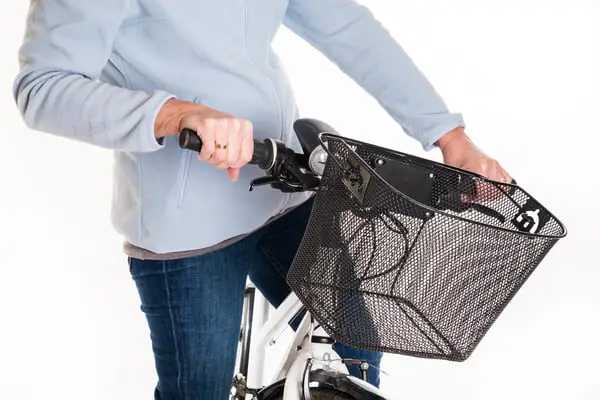
The advantage of using a handlebar bag instead of a bag in the frame of the bike is that it does not create any impediment in the movement of your limbs while pedaling. You don’t even need an extra pannier rack for such a bag.
Bikers often prefer a handlebar bag to put their keys into because such bags can double up as your wallet substitute, for its size and versatile use.
We are certain you have heard of bib shorts used by bikers who are taken on more cutting terrains. These bib shorts sport with bib pockets that are particularly designed to carry small accessories like a key. Although we do not recommend carrying metal or sharp keys on your body while riding, bibs pockets are small and constricted enough to restrict the movement of your keys.
If you are looking to carry your keys for shorter, smoother rides, a bibs pocket is a safe vault for your keys. However, for something as tiny as a key, you may need bib shorts with pockets that have small compartments that are easier to access. There is no point in putting a key into a bib pocket that feels like a maze every time you try to get your keys out.
Bag Options To Consider:
As specific as the name suggests, Bikey is a bag made particularly for your keys while you are riding. The size is compact and uses the hook and loop technology making these perfect to put your keys and forget about any possible fallout.
The small bag is padded all around, which means your bike frames have no chances of getting scratched from your keys or bag buckles. What’s so great about such a bag is its ability to wrap around in any frame and position on the bike. Since they are uniquely made for your keys, the bag can be installed and taken off in no time.
With bags and all the compartments, your keys can often get lost even inside the pockets you kept in. A key specialized bag will make sure that never happens.
We love a good sling bag because of how functional they are when it comes to safely putting your keys in them, but also because of how good they look on a biker. These bags can be worn around the waist or across your chest and usually consist of adjustable straps to change the fitting.
If you’re someone who doesn’t like the idea of a bag strapped against your body while you’re riding, this won’t be your favorite place to put the keys in. However, sling bags and waist pack bags have been old friends of bikers who want to carry any gear with them, let alone a key. Few sling bags have both interior and exterior pockets with zips for extra security for your keys.
How To Carry Phone When Mountain Biking
Many mountain bikers opt to wear a hydration pack while they ride to help store tools and extra water. You can ride with a hydration pack with the bladder installed to help you carry more water or you can remove the bladder and find extra space to carry all kinds of goodies, including your cell phone. If you want your phone front and center while you ride then you can also purchase a bike mount and mount your phone directly onto the handlebars.
RokForm is a company that makes a good bicycle phone mount. This is the most accessible way to carry your phone while you ride. If you like to use your phone for directions or to track your stats while riding then this enables you to keep tabs very easily. Armbands are a universal phone holder and can easily be used while running, in the gym, or even while out riding.
If you are newer to cycling, but already have this accessory from other activities, it can fulfill its purpose for you on the bike. An armband stays with you even if you get off of the bike. If you are a triathlete and plan to run off of the bike then this might be a good option. Some types of cycling shorts will have small pockets on the bib straps that are specifically designed to carry cell phones or keys.
These pockets are very useful if you are going for an Enduro style or short ride where you don’t need to carry a lot of extra equipment. This is a very sleek way to carry a phone while you ride. No one will even be able to tell you are carrying anything. This is for the minimalist rider. Now that you know how you want to carry your phone, you might be wondering why you need to go to the hassle of carrying it in the first place.
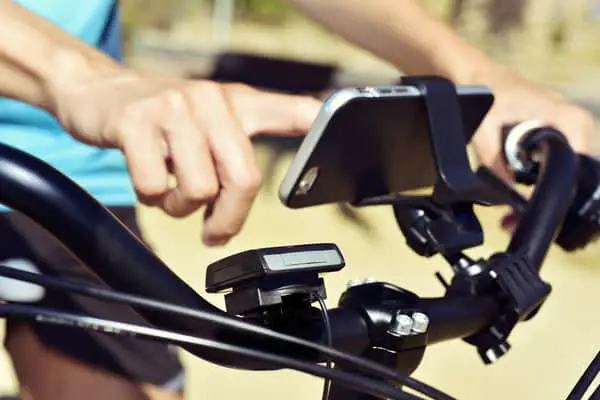
Safety is the number one reason to carry your phone. If you get lost, have a mechanical, or suffer a crash and injury you need to be able to call for help. Even if you don’t want to carry your phone, do it for your friends and family so that they know they have a lifeline that they can reach you on.
While it’s not essential, sometimes it’s nice to have your phone to snap a photo or two during your ride. You might rarely stop for a photo op, but you know you’ll see something amazing the day you forget your phone. It’s just Murphy’s Law!
If you don’t want to spend extra money on a fancy bike computer or watch then you can use your phone to easily track your activity. You’ll want to show your friends later the cool route that you found.
If you’re going for long solo rides then you may enjoy listening to music or a podcast. Just make sure that you keep at least one ear free so that you can hear the world around you.
Finally, last but certainly not least, you may want your phone for directions. It’s all too easy to take a long turn when you’re shredding the trails and sometimes you don’t realize you’re lost until you are really lost. Knowing you can navigate your way out adds a little sense of security to your ride. If you plan to listen to music or podcasts while you ride then you will want some good headphones.
If you use standard iPhone headphones then make sure the cord goes up through your shirt so that it doesn’t get caught on anything while you ride. Also, please make sure you only use one earbud so that you can still hear the world around you.
Best Multi Tool For Mountain Biking
The Merida 20 in 1 multi-tool may look rather standard, but its range of functions and ease of use make it a simple trailside fixer.
The size of the tool means it provides decent leverage yet you can easily slip it into your pocket or riding pack. As the name suggests, there are 20 different tools including multiple hex keys, Torx wrenches, screwdrivers, and spoke wrenches. One thing that is missing is a chain tool, but that’s included in Merida’s even bigger 24-in-1 multi-tool.
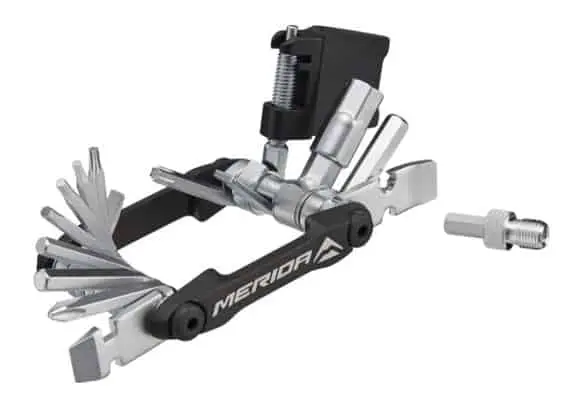
The tool also includes a tire lever, but it’s made out of metal so we would carry a separate plastic one to avoid damaging your rims. This multi-tool is simple and can get your repairs sorted out quickly, which is really all you need in a multi-tool. In theory, the more you pay, the more functions you get.
However, there’s a very wide range of prices for seemingly very similar tools. We’d beware of going too low on cost though as some cheaper tools use poor quality materials, and it only takes one slip from a soft or undersized hex key to round off a bolt and create a serious problem. On the other side, some tools list a load of ‘functions’ like different-sized spoke wrenches that probably aren’t functional at all so check you’re not paying extra for stuff you don’t need.
How the tool is put together makes a big difference. The vast majority come in a ‘penknife’ format with two rows of flip-out tools between two side plates. It’s convenient, compact, easy to make, and generally easy to use, making it the format most of our favorites come in. Be careful of short tools on really small sets though as they can often lack the reach to get into the spaces you need.
Broad bodies can also be a pain in the butt by reducing clearance when you’re trying to turn the tool in a tight space. Watch out for right-angled tools or anything else projecting from the body if you’re going to be stuffing it in your pocket and potentially landing on it. Our other gripe is having the 8mm hex key on the same end as the chain tool, rather than the opposite end where it can be unfolded and used for extra leverage.
‘Caddy designs’ where separate bits slot into a handle, look cute in the shop and we love pocket ratchet tools for home wrenching. However, we’ve spent too long searching for dropped bits in long grass or muddy puddles to recommend them for emergency trailside use though.
First Aid Kit For Mountain Biking
We recognize that you’re trying to lower weight wherever possible as not to be weighted down on the trail, so we understand that you’re not going to want to carry a full first aid kit in your pack when you go mountain biking, but if you want to bike responsibly, here are some of the most essential items we recommend you pack–whether you’re out for a leisurely ride or an intense trail run.
First, you should always have proper hydration. This will not only help once you’ve been injured, but it will help you prevent injuries before they happen by keeping you adequately hydrated and avoiding the side effects of dehydration like cramps, lack of focus, and shakes.
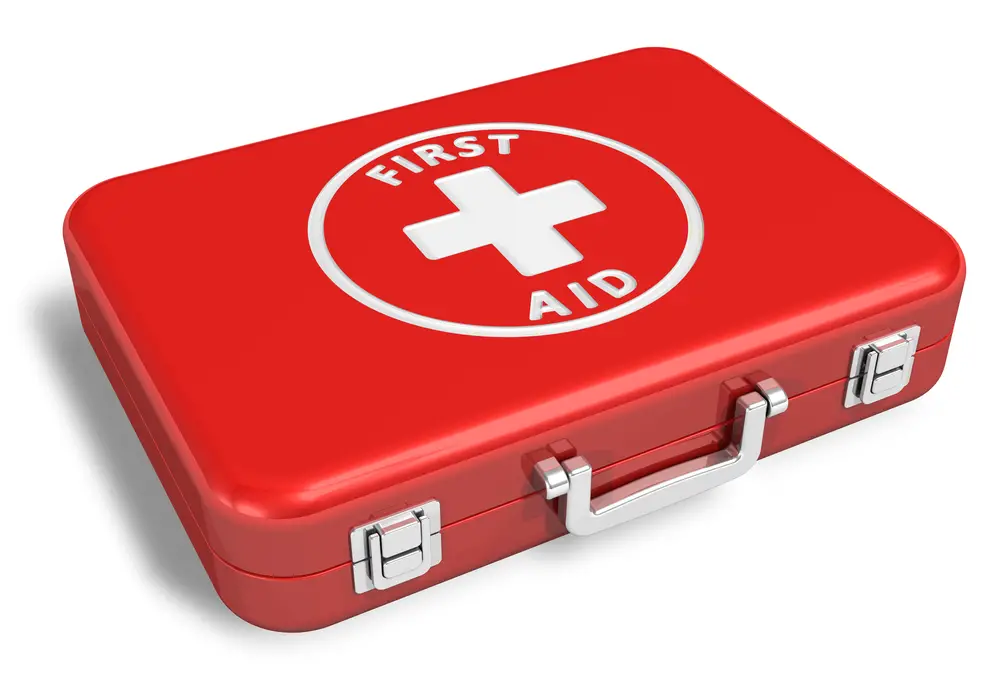
Your kit should also contain:
- Bandaids / moleskin
- Tweezers
- Gauze pads
- Pain reliever / muscle relaxant (acetaminophen, aspirin, ibuprofen, naproxen)
- An emergency contact card
- Antibiotic cream or alcohol swabs or wipes
- Anti-allergy medication (such as an Epipen or Benadryl)
- Zip-ties (for use as tourniquets/splints)
- Emergency snacks/food
- Whistle
- Money (for emergency food, repairs, water, transportation)
- Insurance information
- Latex gloves
- Duct tape or medical tape (this can come in very handy for all sorts of bandages and fixes)
- Extra batteries for your cell phone
You can see that all of these things can come in very handy in certain circumstances and they really don’t add that much weight to your pack. A thing like tweezers might seem unnecessary until one day you don’t have them and get swarmed by bees; an emergency contact card may seem redundant unless you’ve fallen and are unconscious or incoherent. It’s a little thing that adds less than an ounce to your weight but could mean the difference between life and death.
And while we never want to think of the worst case scenario, if you’re out on a solo ride and crash spectacularly you’ll be grateful for those zip ties, that whistle, the emergency food to keep you safe until help arrives. (For that matter, it wouldn’t hurt to bring an emergency mylar blanket (they fold into a tiny packet, and a poncho to keep you dry.)
Best Dogs To Go Mountain Biking With
You probably heard of dogs accompanying their hardcore mountain biking fan parents on a mountain biking trail. That sounds like good news, wherein you’re not just gonna have a pet in your home but an active buddy that will support and accompany you. They’ll make the trail experience more challenging because trail dogs have capabilities that no other person can replace.
Also, the fact that they are game no matter what type of trail, place, time, and weather makes them the better companion for mountain bikers. The enthusiasm that a trail dog can provide will not just leave you motivated on bike rides but also allows you to have fun and accomplish your mountain bike ride goals.
With this in mind, some breeds are better than others when it comes to the intensity of MTB, so consider these three breeds.

Chesapeake Bay Retriever
This is a breed that belongs to large dogs and this breed is known for having very serious features. They could go up to 80 pounds which could be a heavy body weight in running. But, they are not disqualified to be your biking buddy because they are very energetic, alert, and strong to be able to make it until the end of the bike ride.
Like Golden Retrievers, the breed is friendly and thrives on socializing with people. Also, they tend to be disobedient thus proper obedience training is needed to make them your trail buddy.
Treeing Walker Coonhound
This breed is a hound dog that could be your partner in mountain biking. The dog is vibrant and friendly that you can bring especially if there’s a lot of people. They are obedient and they could honestly be your partner in any MTB trail or terrain honestly. Furthermore, they are athletic, smart, and gentle but you also need to train them because they are breeds that are easily distracted by prey and animals along the way.
English Springer Spaniel
A dog breed under the spaniel family that you can bring with you on an MTB trail? I know that likely sounds jarring, but this breed is energetic, fun, and friendly. Their intelligence is enough to be able to handle training and basic commands from owners. Although you may have a problem with their coat getting dirty because it is long and could get you stuck in the mud.
Also, these breeds love the outdoors that’s why they are the perfect companion to your mountain trails.
Additionally, it is important to keep these tips in mind when taking your dog on an MTB adventure:
-
- Don’t Leash Your Dog. It would be dangerous if you keep your dog on a leash. You could be taken down forcefully by your dog and you are limiting thus could hurt them in the process too. Cycling is easier if you are both free in the mountains.
- Be Careful of Dog Bloat. Dogs are susceptible to a stomach ailment known as bloat, which, unlike human bloat, is actually an almost always fatal condition in dogs. It is important not to take your dog MTB riding until at least two hours have passed after a meal. Follow the same rule once you return home and wait 2 hours before feeding. Small treats and water are fine during the MTB outing.
